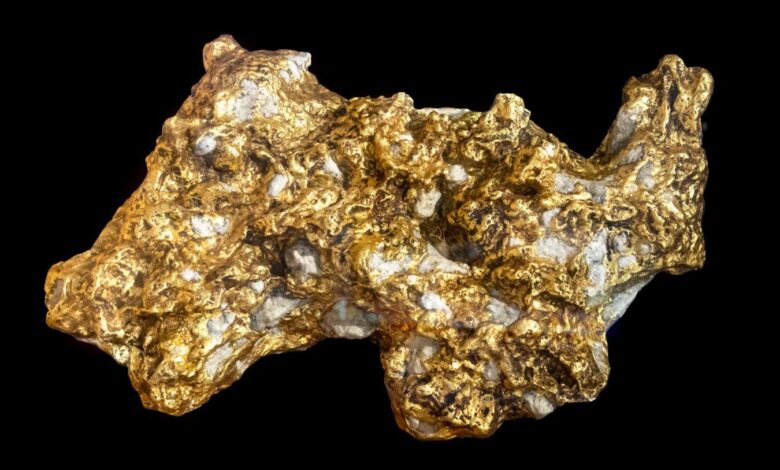

A replica of the Welcome Stranger, a gold nugget weighing almost 100 kilograms found in Australia in 1869
Ian Dagnall/Alamy
Earthquakes may cause gold nuggets to form in quartz by generating an electric field that attracts gold dissolved in fluid forced up from deep underground.
Enormous gold nuggets are often associated with quartz, a ubiquitous but chemically inert mineral. The world’s largest gold nuggets can reach weights of nearly 100 kilograms, but until now no one has been able to explain how such valuable lumps of metal were formed.
“The mystery has been how do you make a large gold nugget in a single spot when there’s no obvious chemical or physical trap,” says Chris Voisey at Monash University in Melbourne.
Voisey and his colleagues have now discovered a possible mechanism. When quartz is subjected to pressure, it produces a voltage that attracts gold that is dissolved in water.
The secret is in the structure of the quartz, Voisey explains. Quartz is the only abundant mineral whose crystals lack a centre of symmetry. This means that when these crystals are distorted or subjected to pressure by seismic activity, their internal electromagnetic configuration is altered and they produce electricity. Electricity generated in response to mechanical stress is known as piezoelectricity.
Gold-bearing hydrothermal fluids from Earth’s mid to lower crust, 15 to 20 kilometres below the surface, are driven up through fissures during seismic activity. However, the gold is so dilute that it would take the equivalent of five Olympic swimming pools of this hydrothermal fluid to produce 10 kilograms of gold.
Voisey and his colleagues hypothesised that gold is concentrated into nuggets within veins by the piezoelectricity of the quartz during repeated earthquakes. To test this idea, the team conducted experiments with quartz crystals placed in a solution containing gold and subjected to moderate pressures from an actuator.
Quartz samples that weren’t subjected to pressure didn’t attract gold, but those that were subjected to force generated a voltage and attracted the metal. Some of the samples were coated in iridium, which accentuates the piezoelectric response of quartz, artificially mimicking greater seismic activity. These samples grew larger pieces of gold – upwards of 6000 nanometres – compared with 200 to 300 nanometres for uncoated quartz.
Once gold started depositing on the quartz, it rapidly attracted more, says Voisey. “Because gold is a conductor, there’s a preferential bias for gold in solution to deposit on pre-existing gold,” he says. “It becomes like a lightning rod that attracts more gold.”
Topics:
Source link




